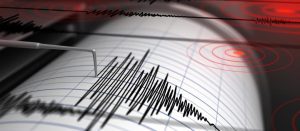|
Getting your Trinity Audio player ready...
|
 Natural disasters are extremely difficult to predict. In recent years, scientific and technological advances have led to improved forecasting of certain natural disasters like hurricanes. Tragically, that is not the case with earthquakes.
Natural disasters are extremely difficult to predict. In recent years, scientific and technological advances have led to improved forecasting of certain natural disasters like hurricanes. Tragically, that is not the case with earthquakes.
Following the catastrophic 7.8 earthquake that struck Turkey and Syria Monday, more than 22,000 people have been killed and tens of thousands more have been injured and those numbers continue to rise. Could this have been predicted?
FIU geophysics professor Shimon Wdowinski answers questions regarding earthquake predictions and sheds light into why quakes are so unpredictable. An expert in space geodesy, natural hazards and sea level rise, Wdowinski is a researcher in the FIU Institute of Environment and the Department of Earth and Environment.
1. Can an earthquake be predicted? If so, how?

Earthquake prediction is a complex topic to discuss, because we first need to define what is considered a successful prediction. There are three main parameters that are needed to be defined for such predictions: Epicenter (or hypocenter) location, time and magnitude. If someone can predict only two of the three parameters (e.g., location and time) but is off by the third parameter (e.g., magnitude), is it still a good prediction? There are also many other parameters to be considered. Anyway, the short answer to the prediction question is NO, because earthquake mechanics is very complex with many unknown parameters that still cannot be measured (e.g., stress level at depth of hypocenter ~15 km deep). Despite the enormous progress in earthquake science, we are still far away from measuring all parameters and variables that are needed for earthquake prediction. In the future, with more advanced technologies and stronger computation capabilities, earthquake prediction may be more feasible.
2. How do scientists know when an earthquake is imminent?
Most earthquakes occur periodically along plate boundaries, because the earthquakes release stress that is slowly built up as two tectonic plates move with respect to one another. The rate of relative movement between the two tectonic plates generally defines the recurrence interval between large magnitude earthquakes along the same fault segment. Plate boundaries with fast moving plates will generate more frequent earthquakes compared to slow moving plates. For example, the San Andreas Fault in California, which serves a boundary between the North American and Pacific plates, accommodates a relative plate motion at a rate of roughly 35 mm/year. Geological and historical studies indicate that the recurrence interval along the San Andreas Fault is about 150 years. Since the last large earthquake that occurred in the Los Angeles area was in 1857, about 175 years ago, we know that this fault segment has accumulated enough stress to cause a large earthquake. Therefore, seismologists suggest that this fault segment is overdue. But it is hard or impossible to predict when the earthquake will occur, because many physical conditions can lead to or trigger the actual earthquake.
3. Will we ever be able to predict earthquakes with an accuracy similar to hurricane predictions?
The short answer is not now, but maybe in the far future. The longer answer is that the comparison between hurricanes and earthquakes is not that simple. Hurricanes occur in the atmosphere, where plenty of sensors can be deployed and can measure atmospheric conditions, over several days. Most large earthquakes occur in the subsurface at depths of 10-50 km, where detailed observations are hard to obtain and over a period of hundreds of years. The long periodicity of the earthquake cycle suggests that small uncertainties in forecasting time (e.g., 1% error) translate to several years versus a few hours in the case of hurricane forecasts.Due to the sparse observations from the subsurface and the long duration of the earthquake cycle, it is very unlikely that we will be able to predict earthquakes to the same degree of accuracy as we do hurricanes.
4. Is there a feasible alternative to earthquake predictions that can be put in place now?
The seismic community has developed early warning systems, which provide an alert of upcoming potentially destructive seismic waves. The early warning system can provide an alert of 5 to 30 seconds before a destructive wave arrives depending on the distance between the epicenter and the population center. If the epicenter is too close to the population center, that warning window diminishes. However, in some cases 5 to 30 seconds can still make a difference. It may be enough time for some people to exit buildings, find shelter within the buildings, or allow for shutdowns of critical infrastructure such as gas pipes to avoid further damage.





